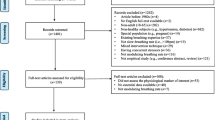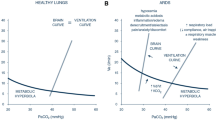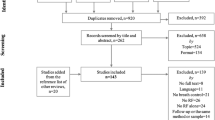Abstract
The aim of this study was to evaluate heart rate variability (HRV) within the first hours of extrauterine life in term neonates. HRV at 2-h and 14-h postpartum were compared by means of time domains (iRR, SDNN, and rMSSD); frequency domains (TP, LF, HF, and LF/HF ratio); and Poincare’s Plot (SD1 and SD2) indices of HRV in 27 healthy, male, term newborns (NBs) born of elective cesarean delivery. Within 14 h after birth, the mean of the iRRs increased (Δ% = 4.4, p < 0.001) as well as parasympathetic indices (rMSSD: Δ% = 32.6; p < 0.03; HF: Δ% = 43.6; p < 0.00; SD1: Δ% = 32.6, p < 0.03). Respiratory rate (RR) decreased (RR: 2 h = 48 (43–55) cycle/min vs. 14 h = 45 (40–48) cycle/min p < 0.01). We concluded that within the first 14 h of birth, cardiac autonomic adjustments are characterized by an increase in parasympathetic activity. Concurrently, there were no significant changes observed in all other HRV indices in healthy, male, term neonates, and born of elective cesarean delivery.

Similar content being viewed by others
References
Javorka K, Javorka M, Tonhajzerova I, Calkovska A, Lehotska Z, Bukovinska Z et al (2011) Determinants of heart rate in newborns. Acta Medica Martiniana. 11:7–16
Kozar M, Tonhajzerova I, Mestanik M, Matasova K, Zibolen M, Calkovska A et al (2018) Heart rate variability in healthy term newborns is related to delivery mode: a prospective observational study. BMC Pregnancy Childb 18(1):264
Zygmunt A, Stanczyk J (2010) Methods of evaluation of autonomic nervous system function. Arch Med Sci 6(1):11–18
Barreto GS, Vanderlei FM, Vanderlei LC, Leite AJ (2016) Impact of malnutrition on cardiac autonomic modulation in children. J Pediatr 92(6):638–644
Lee HK (2009) Cardiac vagal tone as an index of autonomic nervous function in healthy newborn and premature infants. J Korean Acad Child Health Nurs 15(3):299–305
Malik M, Bigger JT, Camm AJ, Kleiger RE, Malliani A, Moss AJ, Schwartz PJ (1996) Heart rate variability. Standards of measurement, physiological interpretation, and clinical use. Task Force of the European Society of Cardiology and the North American Society of Pacing and Electrophysiology. Eur. Heart J. 17(3):354–381
Dahlqvist JA, Wiklund U, Karlsson M, Hanseus K, Stromvall-Larsson E, Nygren A et al (2019) Sinus node dysfunction in patients with Fontan circulation: could heart rate variability be a predictor for pacemaker implantation? Pediatr Cardiol 40(4):685–693
Abreu L (2012) Heart rate variability as a functional marker of development. J Human Growth Dev 22(3):279–282
Makarov L, Komoliatova V, Zevald S, Schmidt G, Muller CA, Serebruany V (2010) QT dynamicity, microvolt T-wave alternans, and heart rate variability during 24-hour ambulatory electrocardiogram monitoring in the healthy newborn of first to fourth day of life. J Electrocardiol 43(1):8–14
Javorka K, Lehotska Z, Kozar M, Uhrikova Z, Kolarovszki B, Javorka M et al (2017) Heart rate variability in newborns. Physiol Res 66(Supplementum2):S203–S214
Verklan MT, Padhye NS (2004) Spectral analysis of heart rate variability: an emerging tool for assessing stability during transition to extrauterine life. J Obstet Gynecol Neonatal Nurs 33(2):256–265
Porto LG, Junqueira LF Jr (2009) Comparison of time-domain short-term heart interval variability analysis using a wrist-worn heart rate monitor and the conventional electrocardiogram. Pacing Clin Electrophysiol 32(1):43–51
Molina GE, Porto LG, Fontana KE, Junqueira LF Jr (2013) Unaltered R-R interval variability and bradycardia in cyclists as compared with non-athletes. Clin Auton Res 23(3):141–148
Molina GE, Fontana KE, Porto LG, Junqueira LF Jr (2016) Post-exercise heart-rate recovery correlates to resting heart-rate variability in healthy men. Clin Auton Res 26(6):415–421
Tarvainen MP, Niskanen JP, Lipponen JA, Ranta-Aho PO, Karjalainen PA (2014) Kubios HRV–heart rate variability analysis software. Comput Methods Prog Biomed 113(1):210–220
Da Silva TD, Massetti T, Crocetta TB, De Mello Monteiro CB, Carll A, Vanderlei LCM et al (2018) Heart rate variability and cardiopulmonary dysfunction in patients with duchenne muscular dystrophy: a systematic review. Pediatr Cardiol 39(5):869–883
Carvalho JL, Rocha AF, Dos Santos I, Itiki C, Junqueira LF, Nascimento FA. Study on the optimal order for the auto-regressive time-frequency analysis of heart rate variability. In: Proceedings of the 25th Annual International Conference of the IEEE Engineering in Medicine and Biology Society. 2003 17–21 Sept. 2003; 7994247 (IEEE Cat. No.03CH37439).
Mehta SK, Super DM, Connuck D, Salvator A, Singer L, Fradley LG et al (2002) Heart rate variability in healthy newborn infants. Am J Cardiol 89(1):50–53
Kantor L, Curtisova V, Dubrava L (2003) Development of heart rate variability during the first three days of life. Acta Med Mart 3(3):22–29
Yang T-F, Kao N-T, Chan R-C, Kuo T-B, Chen S-J (2007) Power spectrum analysis of heart rate variability in full-term and preterm neonates. Tw J Phys Med Rehabil 35(3):127–135
Goudjil S, Imestouren F, Chazal C, Ghostine G, Wallois F, Leke A et al (2013) Patent ductus arteriosus in preterm infants is associated with cardiac autonomic alteration and predominant parasympathetic stimulation. Early Hum Dev 89(9):631–634
Zhang J (2007) Effect of age and sex on heart rate variability in healthy subjects. J Manipulative Physiol Ther 30(5):374–379
Thiriez G, Mougey C, Vermeylen D, Wermenbol V, Lanquart JP, Lin JS et al (2015) Altered autonomic control in preterm newborns with impaired neurological outcomes. Clin Auton Res 25(4):233–242
Rosenstock EG, Cassuto Y, Zmora E (1999) Heart rate variability in the neonate and infant: analytical methods, physiological and clinical observations. Acta Paediatr 88(5):477–482
Kazuma N, Tatara K, Murata M (2000) Can heart rate variability predict sudden death? A case of sudden death in a child with severe coronary sequelae of Kawasaki disease. Pediatr Cardiol 21(4):403–406
Thayer JF, Yamamoto SS, Brosschot JF (2010) The relationship of autonomic imbalance, heart rate variability and cardiovascular disease risk factors. Int J Cardiol 141(2):122–131
Thayer JF, Lane RD (2007) The role of vagal function in the risk for cardiovascular disease and mortality. Biol Psychol 74(2):224–242
Arce-Alvarez A, Melipillan C, Andrade DC, Toledo C, Marcus NJ, Del Rio R (2019) Heart rate variability alterations in infants with spontaneous hypertonia. Pediatr Res. https://doi.org/10.1038/s41390-019-0318-7
Lewandowski AJ (2019) The preterm heart: a unique cardiomyopathy? Pediatr Res. https://doi.org/10.1038/s41390-019-0301-3
Acknowledgements
The authors are gratefully acknowledged to the Neonatology team from Hospital Anchieta, by their valuable technical assistance.
Funding
No financial assistance was received in support of the study.
Author information
Authors and Affiliations
Contributions
Substantial contributions to conception and design, and acquisition of data by LAS and GEM. Drafting the article or revising it critically by CJC, LGGP, and GEM. Final approval of the version to be published by LAS, CJC, LGGP, and GEM.
Corresponding author
Ethics declarations
Conflict of interest
The authors have no financial or other conflicts of interest to declare.
Additional information
Publisher's Note
Springer Nature remains neutral with regard to jurisdictional claims in published maps and institutional affiliations.
Rights and permissions
About this article
Cite this article
Shayani, L.A., da Cruz, C.J., Porto, L.G.G. et al. Cardiac Autonomic Function in the First Hours of Postnatal Life: An Observational Cross-Sectional Study in Term Neonates. Pediatr Cardiol 40, 1703–1708 (2019). https://doi.org/10.1007/s00246-019-02207-y
Received:
Accepted:
Published:
Issue Date:
DOI: https://doi.org/10.1007/s00246-019-02207-y




